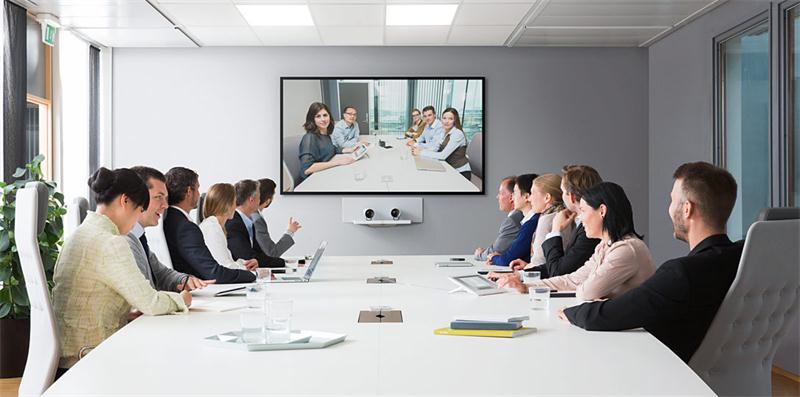Telepresence is a more advanced videoconferencing system, which avoids unnecessary displacements, saves downtime, accelerates decision processes, improves communication and reduces CO2 emissions, such as those caused by road or plane travel. It is a tool increasingly used by companies and employees. Through a simple connection between two or more locations, which can be found thousands of kilometres away from each other, telepresence systems allow establishing a two-way or multi-directional communication, direct, fluid and flexible, and with quality levels amazing. It allows seeing and listening to the interlocutor as if he were a few meters away, with great audio and video quality. In addition, not only oral and gestural communication is maintained.
Telepresence is a new service that allows several people or remote locations to be gathered in a way that recreates the feeling of these people being in the same room. The concept of Telepresence is oriented towards collaborative work, so that in the business environment it brings people, knowledge, and work in different teams, even if they are in remote places. Tele presence is changing the way we collaborate in multinational companies. To achieve these objectives, Telepresence recreates virtual and immersive environments virtually, where users receive sensory stimuli from remote venues (eye contact, directional stereo sound, high definition video, actual participant size, etc.), giving the feeling (perception) of being integrated in the same environment.
There is an important difference between what is Telepresence and Videoconference. While it is true that both simultaneous two-way audio and video communication between the users of the different locations is carried out, in a Telepresence a meeting atmosphere is recreated through the conditioning of the rooms and the incorporation of collaborative tools that improve the Meeting experiences, making participants feel they are in the same physical environment.
Characteristics of Telepresence
- It supports both point-to-point and multipoint sessions (3 or more rooms connected at the same time).
- The solution is very simple to handle, through a simple control panel. Complex technological elements are invisible to end users.
- It allows a natural and personal experience among the participants, with details such as eye contact and natural perception of facial expressions, which determine greater proximity and foster relationships of trust.
- Directional stereo sound, which gives the idea of the location of the remote participant, with multiple microphones and speakers. The high quality sound also prevents fatigue of the participants.
- It uses images of real size of the users, in video of high definition (HD).
- Provides the feeling of being in the same room, thanks to the identical conditioning and furniture for all rooms.
- No delays in sound or image. Synchronization between audio and video.
- High quality collaboration tools are used (document cameras, shared documents, videos, etc.)
- LAN (Ethernet), Video (VGA) and Audio (RCA) connections in each seat.
- Support to integrate telephone calls to a Telepresence session.
- Service with Telepresence Infrastructure Management and End User Assistance
Telepresence Tools
From videoconferencing to Telepresence there is an abyss, which technology has managed to overcome. This new assignment writing service communication tool relies on a sophisticated infrastructure (plasma screen, sound and high definition video) to create a virtual communication interface between the tele worker and its company’s employees. The objective: to make communication more fluid, more personal and therefore closer to reality. This is a high-end tool aimed at decision makers in large companies, for whom the quality and integrity of the message transmitted is essential.
Advantages of Telepresence
- It guarantees the transmission of the appropriate message using the best available human resource.
- It takes the message to a greater number of people in less time and without the need to mobilize them from their workplace.
- It allows the integration of effective and modern audiovisual resources.
- Streamlines effective communication by providing a means to keep users informed about the latest events.
- It provides the infrastructure for the transmission of videoconferences generated in distant places.
- They save time and effort in spreading the most up-to-date knowledge.
- Acceleration of decision making (efficiency and competitiveness)
- If used properly they can provide adequate education and training.
- Greater fidelity and service capacity with third parties
- Higher quality of life for users
- Greater and better communication
- Cost reduction
- Time saving
Disadvantages of Telepresence
- It is a much closed system.
- Technological dependence
- Unless you move to a video conferencing center, you need to purchase audio and video equipment.
- The cost of the equipment varies from a few hundred for complementary components of PC of minimum quality to several thousand for a complex system with television monitors.
- They are not adequate to discuss more complex matters; ideally, in this situation, it would be the Web conference. Nor are they the best means to start or prolong an important business relationship.







